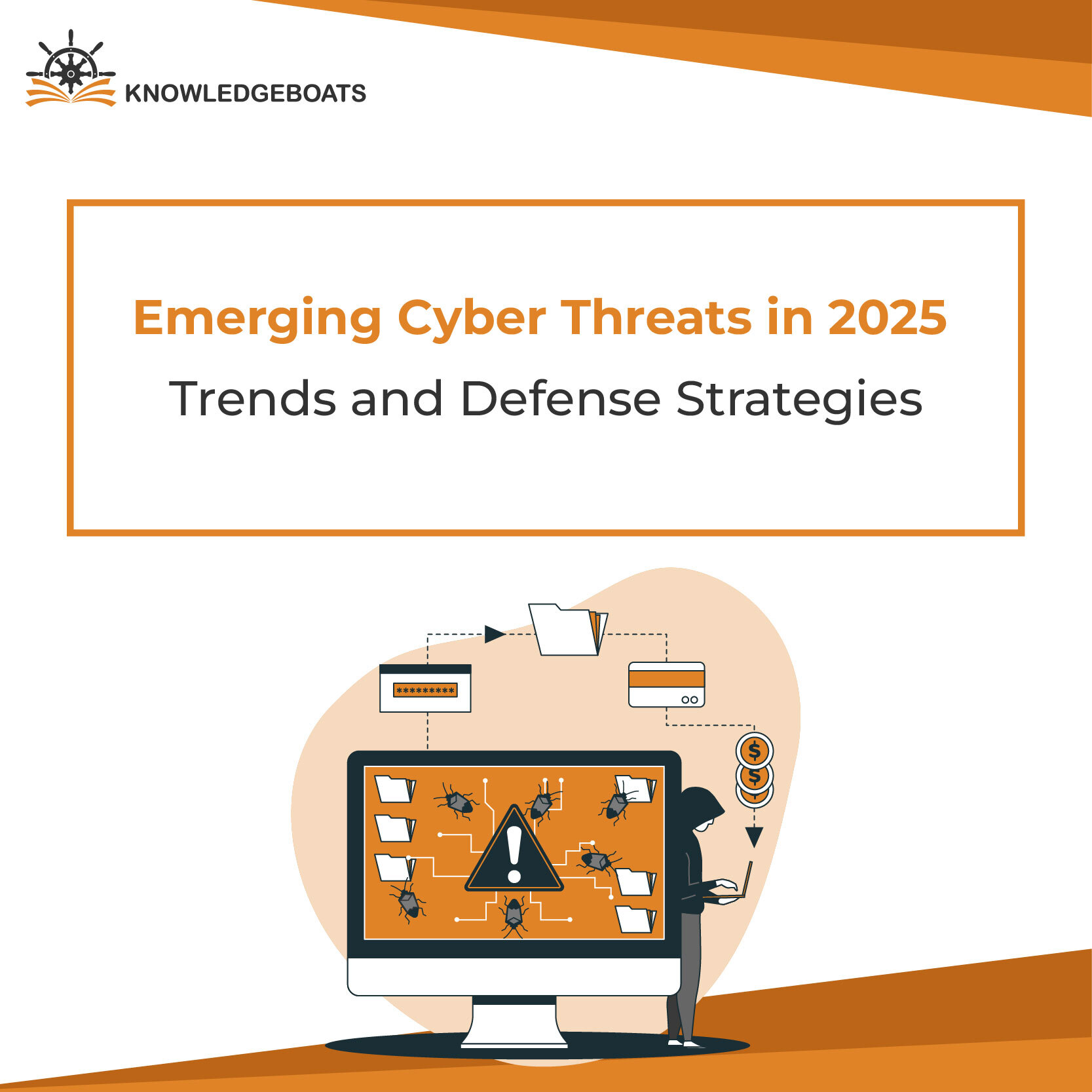
Cyber threats are unauthorized activities directed towards damaging and disrupting an organization’s reputation and sometimes even stealing its sensitive data. Over the past few decades, the landscape of digital threats has changed drastically. Technology implementation and interconnectedness have created advanced challenges in securing data.
As we move to 2025, cyber threats continue to rise at an alarming rate. Cybercriminals have become increasingly clever, targeting small startups and large corporations alike. Small businesses are normally on the hacker’s radar as their security system is perceived as weak. A single cyberattack can bring down a small business causing financial and reputational loss, and sometimes even closure. Cyber threats extend beyond businesses, affecting governments and individuals which emphasizes the need for robust cybersecurity practices across the board.
Emerging Cyber Threats
With cyberthreats being an increasing threat, organizations across the world had spent approximately $150 billion in 2021 on cybersecurity, which grew 12.4% annually, as per McKinsey report. Despite this investment, the rise of digital threats along with ransomware and AI-powered attacks continues to increase.
From technologies to sophisticated cyber threats, artificial intelligence (AI) has permeated every aspect of our digital lives. It has simplified many daily tasks but also amplified potential risks.
The escalating advancement of cyber threats necessitates the deployment of increasingly powerful technologies to counter them. Let us delve deeper into the effects of technology integration in cyber threats to keep watch of:
AI-Powered Attacks
AI is at the core of digital innovation. It has upgraded the standard of living but has also threatened the digital world. While AI has revolutionized the industry, it has also risen in posing complex cyber-attacks. AI can also be used to manipulate individuals, compromise systems, and breach sensitive data. Another advanced AI threat, Deepfake, is a threat as it can be misused to create hyper-realistic AI-generated content, which cybercriminals can further exploit. The level of reliance on technology has increased, and thus, implementing the strongest security measures is required to cope with these emerging threats.
IoT Device Vulnerabilities
The Internet of Things has certainly transformed the world. Unfortunately, it has opened up vast space in security as hackers use vulnerabilities of IoT devices to manipulate its systems. Hackers can steal sensitive information and manipulate physical systems, B2B control systems pose a high probability of damage and disruption. With more connected devices entering our lives, cybersecurity and proactive measures has become a priority for all businesses.
Supply Chain Attacks
Supply chain attacks represent a significant threat, exploiting vulnerabilities within the intricate network of vendors and suppliers. These attacks often leverage third-party access points, underscoring the critical importance of securing entire supply chain ecosystem.
Ransomware Evolution
Ransomware attacks have evolved significantly since their inception in the 1980s. Modern hackers now employ advanced techniques like ransomware-as-a-service (RaaS), which allows even novice attackers to deploy ransomware. Organizations must continuously strengthen their defences against these threats.
Cloud Security Threats
Your cloud infrastructure is basically like a digital vault, though it offers unparalleled convenience and flexibility, it also presents significant security challenges. Just like a physical vault, your cloud environment also demands comprehensive security protocols to safeguard your valuable data. Comprehensive cloud security encompasses a range of technologies, policies, and procedures designed to protect cloud-based systems which are essential for safeguarding sensitive data.
Emerging Cyber Threat Defenses for 2025
Integrating AI And ML In Cybersecurity
AI and ML technologies allow rapid scanning of huge volumes of data that can proactively identify potential threats. The integration of AI and ML into cybersecurity solutions can make response times faster and lower the severity of incidents. Moreover, these technologies help combat social engineering and phishing attacks as they analyze the content of emails and websites to identify and neutralize fraudulent communications.
Adopting Zero-Trust Security
The zero-trust model operates on the principle of “never trust, always verify”. It strengthens an organization’s defense by implementing strict control on access, constant authentication and authorization to ensure that users are genuine when they try to access sensitive data and systems. This proactive approach helps control the risk of unauthorized access and data breaches, protecting business assets and critical data.
Enhancing Endpoint Detection and Response (EDR)
Cybersecurity strategies include Endpoint Detection and Response as its latest addition which continuously scans endpoints for malicious activities helping organizations proactively detect and respond to advanced threats. Investment in strong EDR solutions can prove critical for the security of your organization’s digital assets.
Implementing Incident Response Plans
A strong incident response plan can form the bedrock of your organization’s cybersecurity. A good IRP with proper, defined procedures and adequate testing helps an organization offer a swift coordinated response to cyberattacks.
Strengthening Digital Forensics
Digital forensics refers to collecting and understanding digital evidence of threats to reach the root cause of the attack and preventing any future threats. The digital forensics supports compliance, legal proceedings, and overall security improvement.
Securing Cloud Environments
Organizations need secure cloud environments as digital transformation and adaptation of cloud-based services keeps increasing rapidly. As technology evolves, businesses must emphasize prioritizing the protection of sensitive data. Companies need to implement stronger cloud security practices, access controls, data encryption, and conduct regular security assessments.
Conclusion
To safeguard your business from the ever-evolving landscape of cyber threats, it’s important to have a robust cybersecurity strategy. This includes the establishment of a cybersecurity infrastructure with firewalls and intrusion detection systems to guide employees about the best cybersecurity practices. By supporting security measures across the board, organizations can avoid devastating breaches of their sensitive data, reduce the risk of cyberattacks, and protect their business’s reputation.



